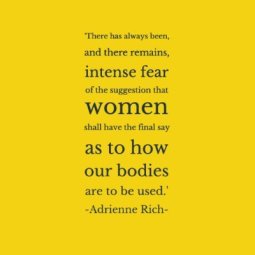The announcement of the Miles Franklin longlist is as good a time as any to entreat you to read more Australian fiction. The longlist features works by authors both new and established, a veritable feast of works of ‘outstanding literary merit’ from a diverse cross-section of contemporary Australia that are political, beautiful and both.
For me, two works in particular stand out from this list: Melissa Lucashenko’s Too Much Lip (The University of Queensland Press) and Gail Jones’s The Death of Noah Glass (Text Publishing). While both are of outstanding literary merit, I LOVED these books for very different reasons.
Too Much Lip
Bundjalung author Lucashenko uses Too Much Lip to delve into every nook and cranny of modern Aboriginal-Australian life. The book is unashamedly political, giving a window into the very personal aspects of individual native title and land rights cases, and the impact of overdevelopment on the natural environment and places of significance.
The book opens with protagonist Kerry Salter lost on a highway, astride a stolen Harley Davidson, having a conversation with two crows. While by no measure a fantasy, the novel is peppered with moments of goose bump-inducing magical realism that serve to underscore Kerry’s connection to the land, to the animals and to the past. It is a preview to the fictional world of Lucashenko, a brutal, no-holds-barred exposé that is grounded in Aboriginal-Australian culture and language.
What makes this a truly outstanding book is Lucashenko’s refusal to sugar coat the effect that colonisation continues to have on modern Aboriginal Australians, as the struggles within Kerry’s family and local community are just as important as the struggles of their community against the corrupt authorities in post-colonial Australia. The narrative is permeated with references to the negative consequences of drug abuse, alcoholism, religious evangelism, child sexual abuse, institutional racism, indigenous incarceration, white beauty standards and high rates of male violence against women and children, and the antidote provided by rehabilitating connections to land, culture and history.
Lucashenko weaves all of these elements into a novel that is gritty and somewhat romantic, depressing and hopeful.
Melissa Lucashenko is a must-read author for anyone who considers themselves to be on the political left in Australia today. If you’ve never read her work before, I would highly encourage that you do so. Her award-winning tome Mullumbimby (UQP, 2013) is my favourite novel ever, but she is also an accomplished non-fiction essayist and short-story writer (see Dreamers for a stellar example).
The Death of Noah Glass
It’s been a while since I’ve read a novel that demanded my attention as much as The Death of Noah Glass (Text Publishing, 2018). Its author Gail Jones is widely regarded as one of Australia’s best writers, having variously won and been shortlisted for The Miles Franklin, The Stella, the WA Premier’s Award, the ASAL Gold Medal and a number of other Australian and international awards.
In The Death of Noah Glass, Jones does not disappoint. The story follows three relatives – the eponymous Noah Glass, an art historian, and his children Evie and Martin. From the outset we were greeted by Evie and Martin’s grief as they process the death Noah, who has been found facedown in the communal swimming pool of his apartment complex. But in the midst of their grief, and the oddness of coming back together in the shadow of death, the siblings are confronted with something even more alienating as local police begin to ask them questions about a stolen Vincenzo Ragusa sculpture, an international heist they believe Noah was somehow involved in. The narrative follows each of them - Noah’s past up to his death, Evie’s attempt to rebuild her life, and Martin’s investigatory trip to Italy, searching for clues regarding the allegations against his father.
Family stories following convergent narratives can feel crowded, while stories of separate family members’ trials can risk feeling tenuous or having one perspective take over, but Jones skillfully weaves the characters together while allowing each of them to sufficiently breathe. Additionally, Jones uses the novel to explore themes of contemporary social isolation, neurodiversity, the eternal and unhealthy Sydney obsession with capital growth, single fatherhood, historical racism, and deaf culture.
But the novel excites me as much for its form as its story. In a culture of Netflix binges, information on demand and quick fix knowledge, readers of Noah are forced to change gear. Reading novels like this is, in some ways, a luxury, an indulgence. But in our world of market-driven fast entertainment and short stories, it is an act of resistance to slow down, to savour the turn of phrase like morsels, to let the words unwind and fill your brain. Happy reading.
